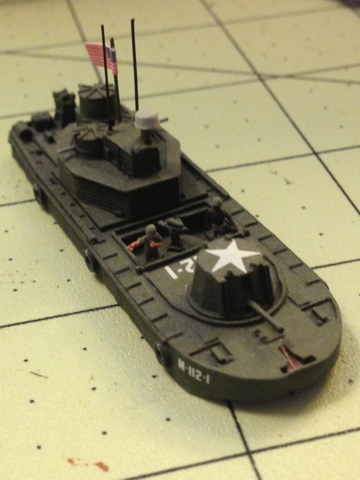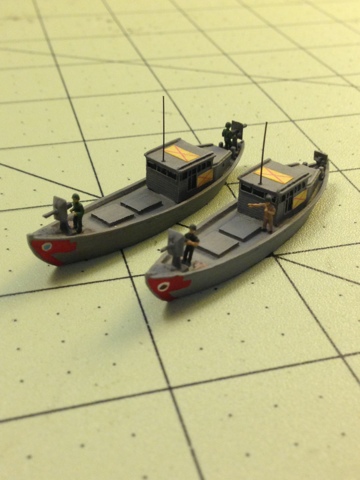The first thing is that you have to stop thinking about individual miniatures. You're not painting AN Italian tank:
One of the strengths of this scale is that the minis will rarely, if ever, appear singly. In 6mm and bigger, each model is perceived as an individual, even if it represents more than one actual vehicle. In 3mm, vehicles are used and perceived in the collective sense. You see platoons or companies or battalions, but not individuals. And your painting style needs to reflect this.
As I've said before, at this small scale, the vast majority of detail work is totally wasted effort. Remember these minis will be on a wargaming table and 3-6 feet from the eye. All your intricately painted detail will never be seen. I go for the vehicle's overall color, any basic camouflage pattern (and I do mean BASIC!), and the most obvious details, meaning those that are a drastically different color than the rest of the vehicle (tank tracks, windshields, mufflers, etc). I then give it a strong sepia wash to add some definition, a blast of dullcote, and I'm done.
At 1/600, the honest truth is that all license plates, vehicle numbers, unit symbols, painted-on graffiti, headlights, etc would be utterly invisible. However, these tiny guys need a splash of color to catch the eye and help them not blend into the tabletop. As you can see on this M551 Sheridan:
The armored cavalry flag that many units painted on their vehicles should be so small in this instance that it shouldn't be visible, but reality sometimes needs a nudge. Same with the vehicle numbers on these East German T-72's:
In essence, think of yourself as a characture artist. Take the most prominent features of the vehicle and exaggerate them. And remember that you're painting the unit, not the vehicle.
The idea with the paint schemes on real military vehicles is that they're intended to fade into the landscape. That's the whole point of camouflage!! But for our purposes, you don't want to "lose" your minis on the table. Vary the vehicle's overall color from the color of your bases. Light colored vehicles should have slightly darker bases and vice-versa. I'm too much of a purist to make the difference too flagrant, but a degree of contrast is necessary.
Because gun barrels this tiny wouldn't stand a chance, Oddzial Osmy leaves a metal flange connecting the barrel to the hull. It's pointless to try to remove it. The high aluminum content in the alloy they use makes these minis very hard to cut into or file, as well as being brittle if you do try. So that leaves you with the option of disguising the flange. You can paint it the same color as the vehicle or, what I've chosen to do, paint it black. Black is the color the human eye most readily edits out. Here's some Italian M13/40's:
I guess the basic lesson is don't try to paint tiny individual museum pieces. You're wasting your time. Remember, the minis will be seen as groups and you should be painting for mass effect. Accentuate color contrasts and try to add a splash of bright (but historically relevant) color to each mini.
More from me next time!!


















































